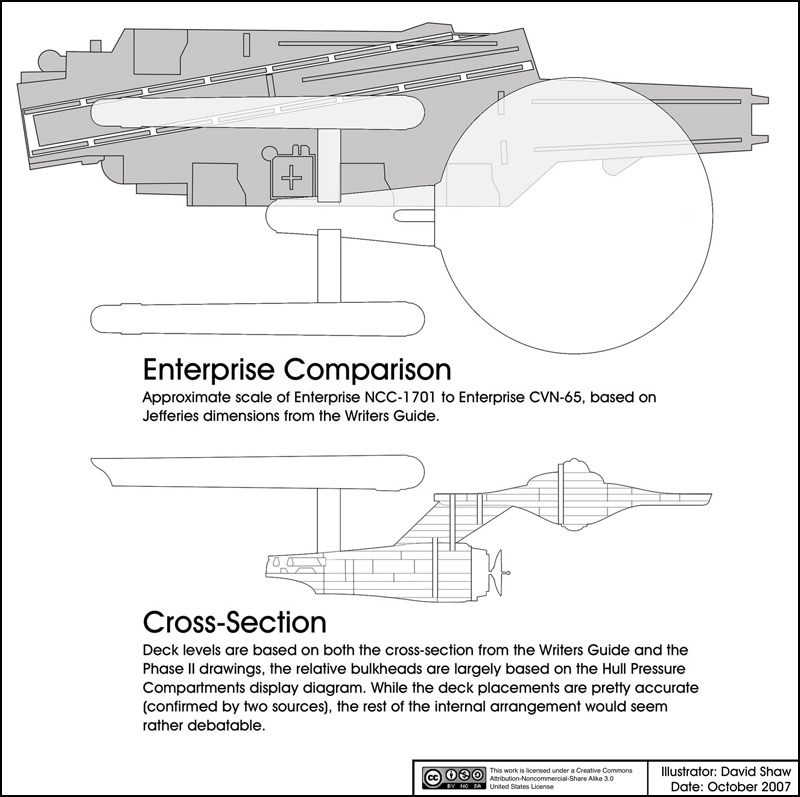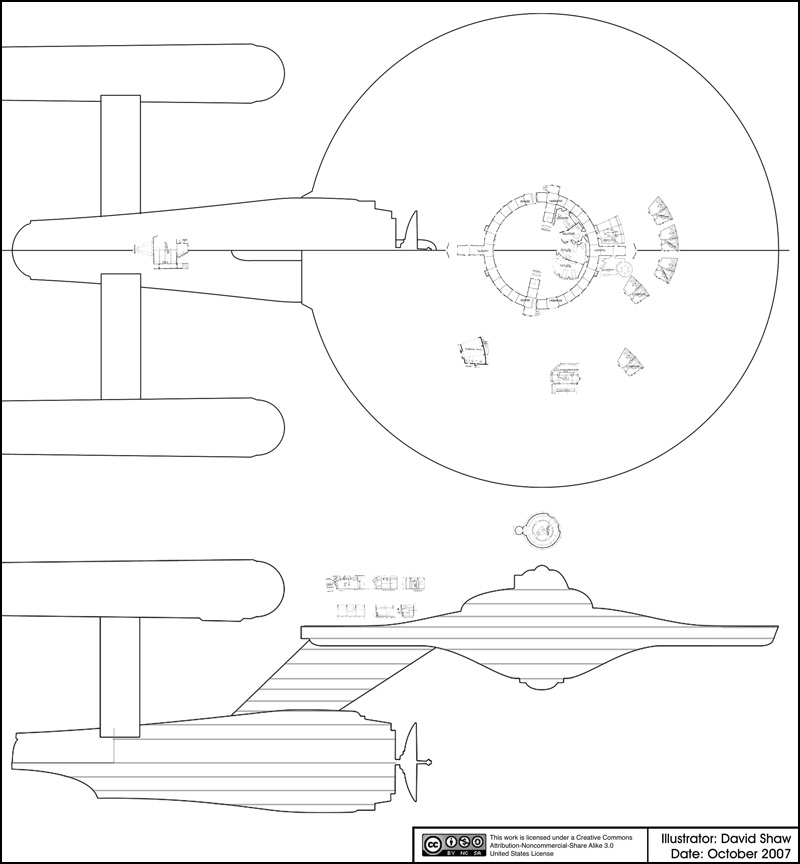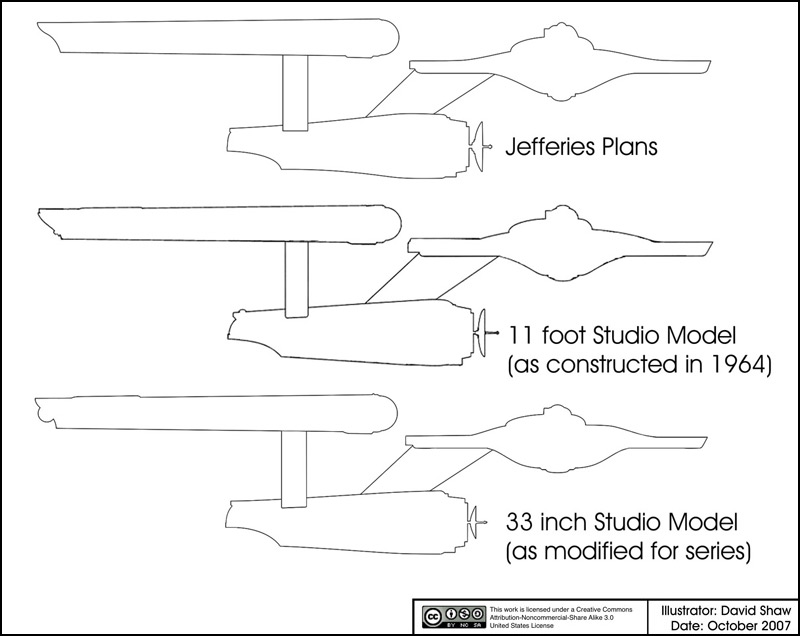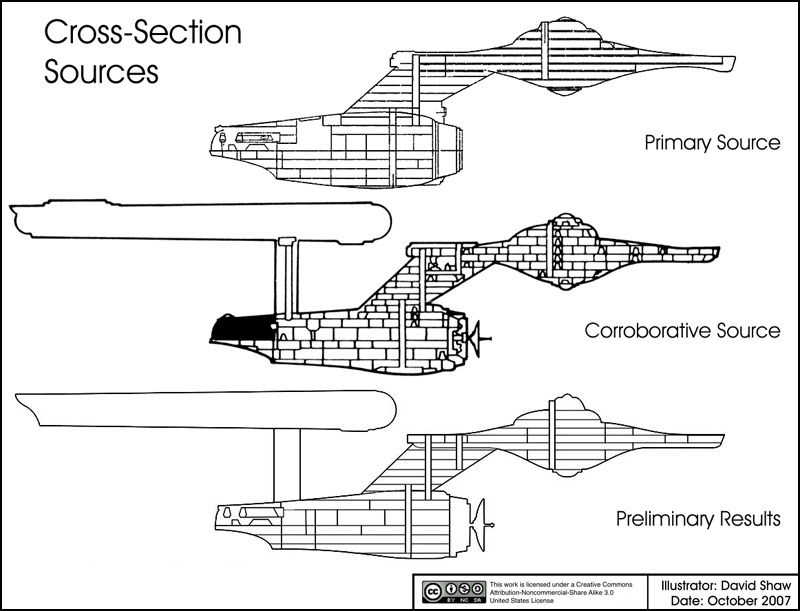Cary L. Brown said:
Produce the "kit" in the form of Adobe Illustrator or Corel Draw vector-based files. In the file, provide the "puzzle pieces" as groups of elements which can be replicated, copied, rotated, and moved IN THE BASE FILE. That way, you get the benefit, plus the ability to be much more precise, plus the ability to make edited copies of rooms where and when appropriate, PLUS (the biggest argument for ME) the benefit of not having to cover up my kitchen floor with hundreds of tiny little scraps of paper and having to breath glue fumes for a days!
 Praetor said:
Shaw
Praetor said:
Shaw, as with everyone else's (including my own) attempts at defining the interiors of the good ole 1701, I am very interested in your effort, and I think you may be onto something with your scaling and methods. Futhermore, if you were to produce a vector file for placing the various areas within the ship, I know that I would love taking a go at it.
Well, I guess I had under estimated the level of interest in a
do it yourself version.
I was planning on redrawing all the set plans anyways, so it wouldn't be all that hard to turn each of the rooms into an EPS, though (like I said before) I'm not planning on adding extra stuff to those bits of info. Basically this means that two wall or three wall sets will only have those walls, I'll leave it to the various artist to do the placement of walls not originally there.
I could then do an Illustrator document with each of the deck outlines as a drawing layer. If anyone knows what the most compatible version of an Illustrator document would be for importing into other non-Adobe vector apps, I would be happy to create the deck outline document in that version of Illustrator (my oldest copy is version 6, though I don't recall using layers before version 7... not that I use Illustrator much anyways). It would be nice if people using CoralDRAW or Freehand or some other vector app would have the same opportunity to play around like this.
Cary L. Brown said:
Hmmm... the only dubious decision you've made (IMHO). As far as I'm concerned, the "real" ship is the one seen on-screen. Anything else might represent a different ship, but it cannot be "The Enterprise" in my mind.
Then again, I'm old and crotchety and set in my ways!

The
other reason for using the conjectural Jefferies plans was that I haven't completely drawn up the 11 foot model on my own just yet. I have started on data collection and analysis (much like I had for the 33 inch model), but haven't felt the same drive to spend time on that project as their are already really good plans for that model out there.
Additionally, my plans were going to be the model
as is (or
as was, as the case may be). That is to say, if it was missing from the original model, it would be missing from these plans. So all the symmetry short cuts that were made on the model would be documented in the details of my set of plans. I guess that wouldn't be all that different from presenting two and three wall sets in their original states, so I could just leave the symmetry stuff up in the air too.
But for my modest attempt, I wouldn't worry too much about the differences from the conjectural Jefferies plans and those of the 11 foot model. Below is a comparison of the curves of my conjectural Jefferies plans, Casimiro's 11 foot pilot plans and my 33 inch plans... and the 11 foot model seemed to followed Jefferies plans pretty closely.
Cary L. Brown said:
Yep, the guy had thought things through to a reasonable degree... my description of it as "sketches" is no denigration to his quality of work.
I think that is why this is so interesting to me... when thinking about it, the amount of time that Jefferies had in preproduction of
The Cage, the period between
The Cage and
WNMHGB, and the period between
WNMHGB and the beginning of actual filming of season one, that is a lot of time to mull over some of the details of the Enterprise above and beyond what would have been required (or expected) for a weekly television show. While I don't think he filled in every space within the Enterprise, I'd be willing to bet that he put some extra work in on the logical assembly of what was asked for by the producers within those constraints.
So yeah, I'm of a similar option as some other members here that there is more beyond what was used (or needed) for production lurking in Jefferies' designs, and that the Enterprise was a labor of love. I could totally see him using additional time in the beginning of the series to think about more than what was asked of him on this.
Cary L. Brown said:
Which just support what I've always said... albeit that Jeffries' design work was at a "sketch" level moreso than a "fully realized design" level (after all, he wasn't being paid to figure out where individual frame members were on the ship, was he???), he did put a lot of thought into the design and wanted it to "fit together" in his own mind if nothing else. The guy WAS an outstanding designer and a very technically-minded fellow (with Andrew Probert being someone I respect just as much, and for the same reasons). These two guys have given us the best design work for Trek we've had so far (though I've never, STYLISTICALLY, cared much for the 1701-D).
Yeah... exactly. :thumbsup:
This is a much closer view of a section of the test cross-section, which also includes
MGagen's diagram of engineering looking aft (as he has done outstanding work at marrying set and model elements to scale with each other). It was seeing these different elements together that made me realize that these deck levels were not only not a rushed drawing for the writer's guide, but a sense of sadness at what was most likely lost in the intervening years. Because to get stuff to match this well, you have to figure that he most likely drew out a ton of sketches and figures, all of which have most likely been lost to the passage of time.






 ).
).




